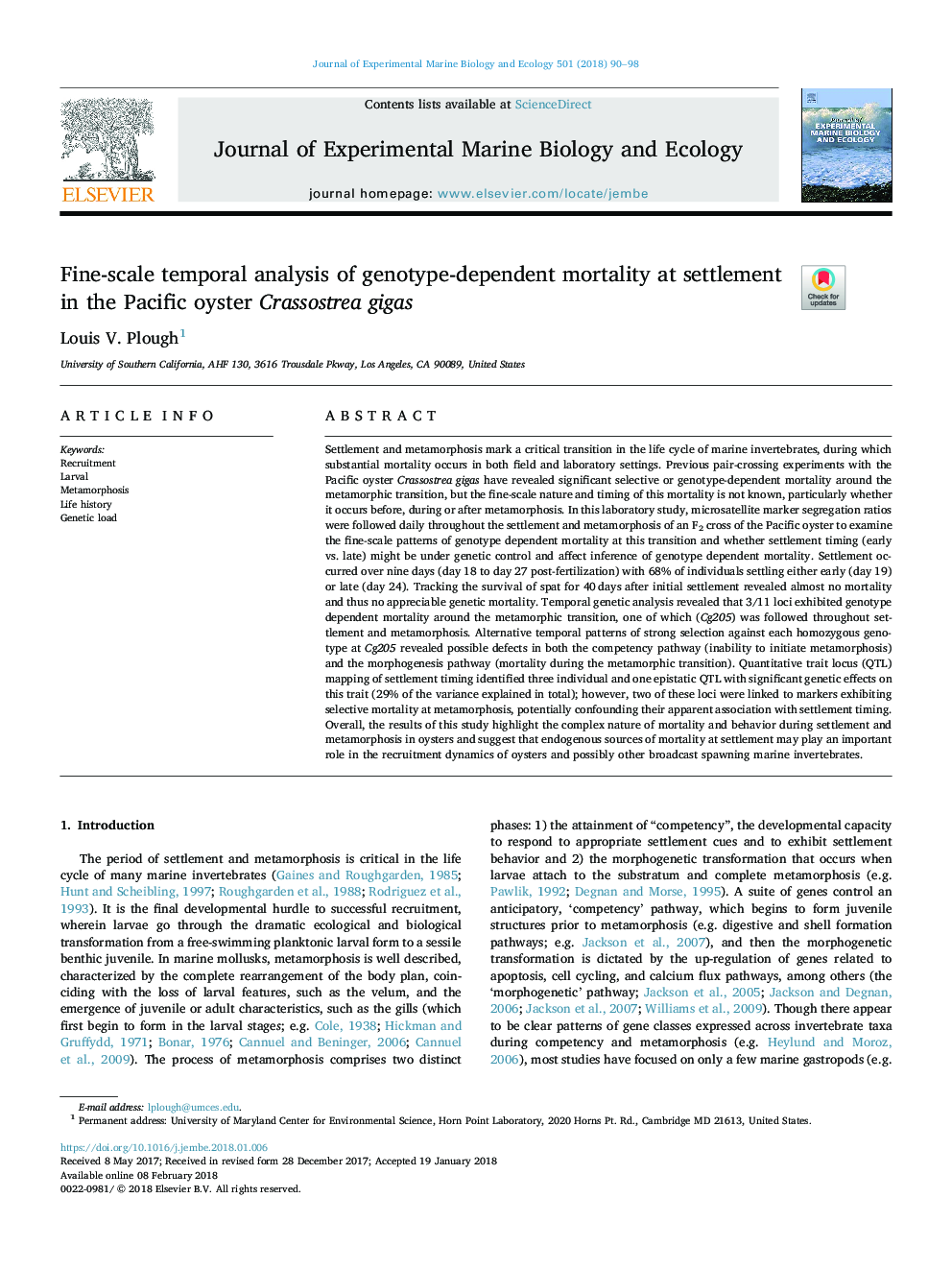| Article ID | Journal | Published Year | Pages | File Type |
|---|---|---|---|---|
| 8848986 | Journal of Experimental Marine Biology and Ecology | 2018 | 9 Pages |
Abstract
Settlement and metamorphosis mark a critical transition in the life cycle of marine invertebrates, during which substantial mortality occurs in both field and laboratory settings. Previous pair-crossing experiments with the Pacific oyster Crassostrea gigas have revealed significant selective or genotype-dependent mortality around the metamorphic transition, but the fine-scale nature and timing of this mortality is not known, particularly whether it occurs before, during or after metamorphosis. In this laboratory study, microsatellite marker segregation ratios were followed daily throughout the settlement and metamorphosis of an F2 cross of the Pacific oyster to examine the fine-scale patterns of genotype dependent mortality at this transition and whether settlement timing (early vs. late) might be under genetic control and affect inference of genotype dependent mortality. Settlement occurred over nine days (day 18 to day 27 post-fertilization) with 68% of individuals settling either early (day 19) or late (day 24). Tracking the survival of spat for 40â¯days after initial settlement revealed almost no mortality and thus no appreciable genetic mortality. Temporal genetic analysis revealed that 3/11 loci exhibited genotype dependent mortality around the metamorphic transition, one of which (Cg205) was followed throughout settlement and metamorphosis. Alternative temporal patterns of strong selection against each homozygous genotype at Cg205 revealed possible defects in both the competency pathway (inability to initiate metamorphosis) and the morphogenesis pathway (mortality during the metamorphic transition). Quantitative trait locus (QTL) mapping of settlement timing identified three individual and one epistatic QTL with significant genetic effects on this trait (29% of the variance explained in total); however, two of these loci were linked to markers exhibiting selective mortality at metamorphosis, potentially confounding their apparent association with settlement timing. Overall, the results of this study highlight the complex nature of mortality and behavior during settlement and metamorphosis in oysters and suggest that endogenous sources of mortality at settlement may play an important role in the recruitment dynamics of oysters and possibly other broadcast spawning marine invertebrates.
Related Topics
Life Sciences
Agricultural and Biological Sciences
Aquatic Science
Authors
Louis V. Plough,
